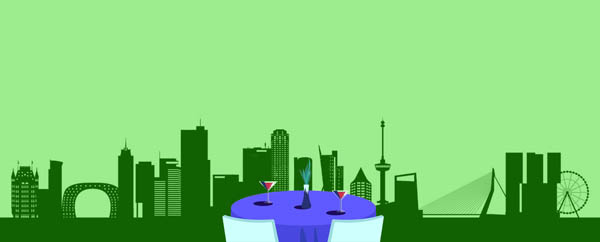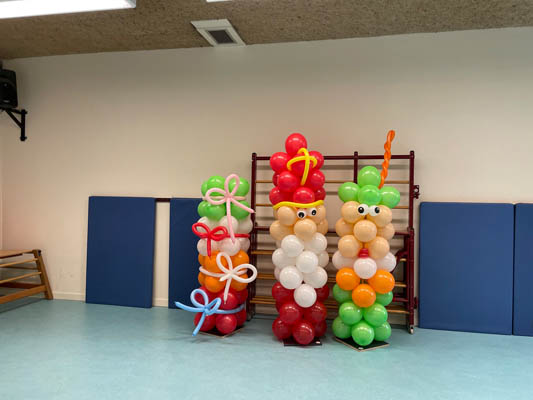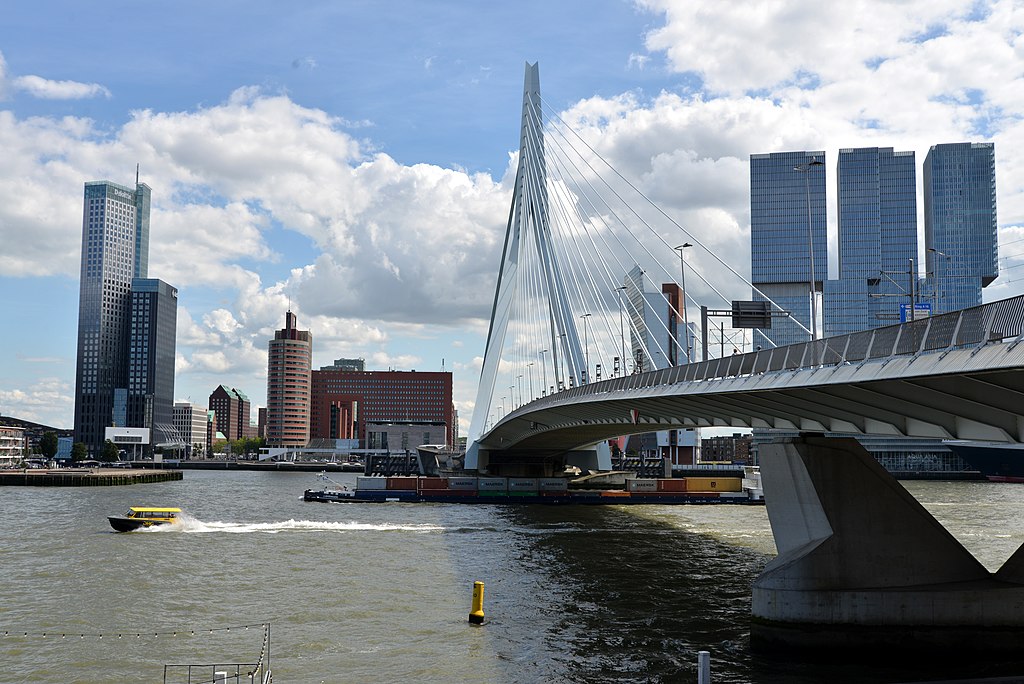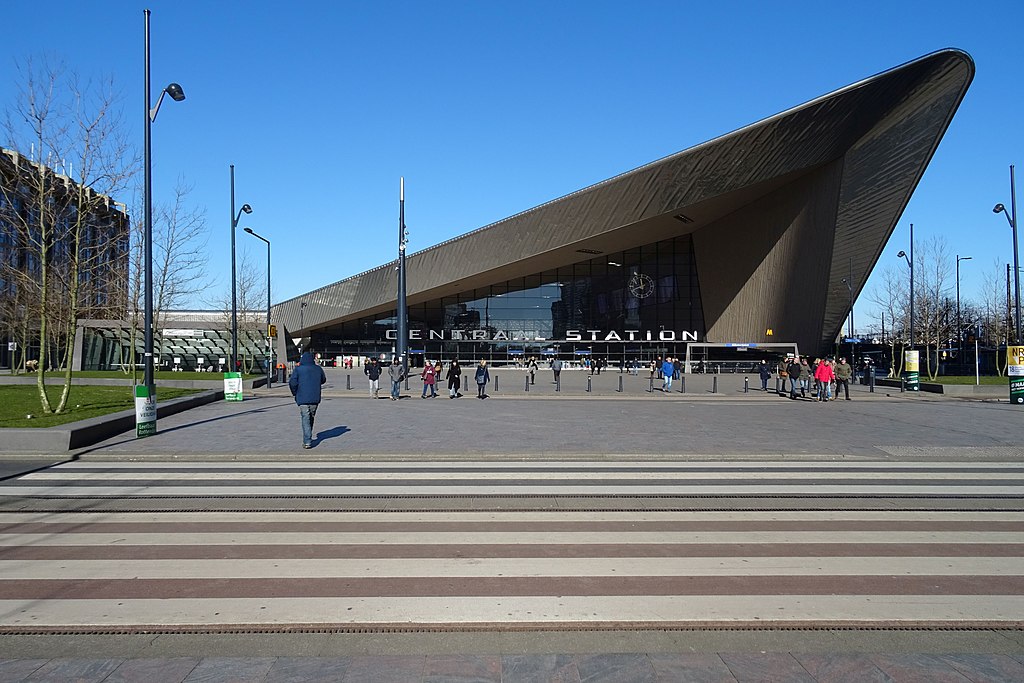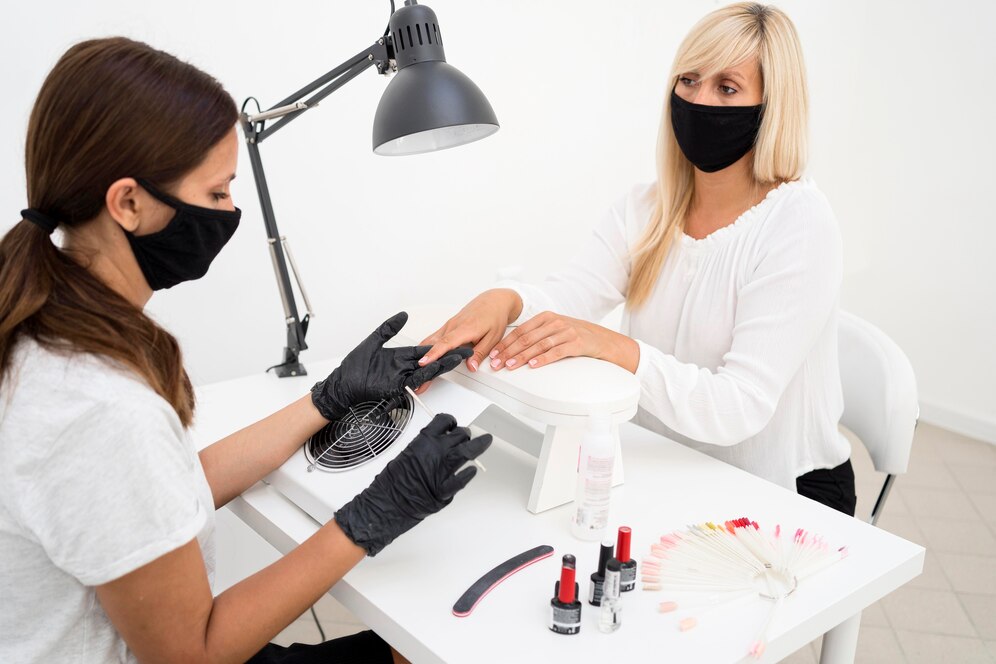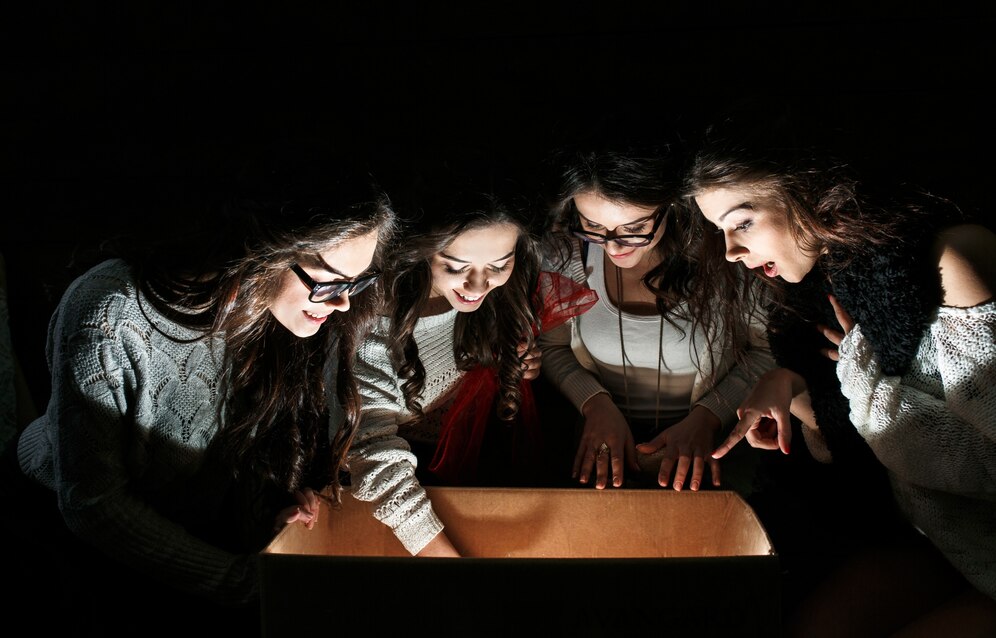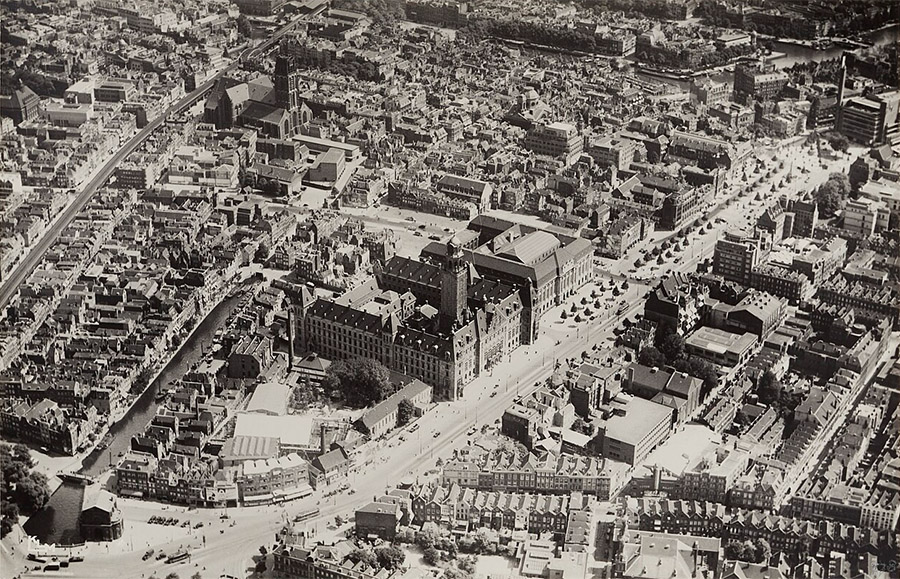
© KLM Aerocarto
What did Rotterdam look like before the war?
by Rotterdam Balloon Company, 2023-04-06
Table of Contents
Disclaimer: We receive a small commission from some of the links on this page.
Rotterdam, known for its lively port and trade, experienced an era of growth and glory before the devastating bombing of May 14, 1940. The city center in particular underwent a major transformation in two striking periods, which tells a story of economic prosperity, cultural vitality and urban development. The historic city center had many narrow streets, canals, bridges and old buildings, including the imposing Laurenskerk, which has been in the heart of the city since the Middle Ages - and still is.
The Belle Epoque (1900 - 1920)
Belle Epoque, the beautiful time at the end of the nineteenth century. This period, also called 'the beautiful century', brought with it a wave of economic prosperity. The port of Rotterdam grew steadily, and other sectors such as food processing (with names like Jamin and Blueband) and tobacco and coffee trading (with companies like Van Nelle) flourished. Rotterdam became a busy public transport hub, with numerous train stations bringing people from different corners of the country to the city. This attracted a diverse group of workers, mainly from Brabant and Zeeland, who saw Rotterdam as a city of opportunity. Many settled in the suburbs, while the center mainly served as a place to work and relax.
Of course, Rotterdam also had its less attractive sides, such as the Zandbuurt, a working-class district near the current city hall. Known for its narrow alleys and small houses, this neighborhood had a notorious reputation for illegal trafficking, prostitution and violence. The city council decided to demolish it and replaced the old neighborhood with imposing buildings, including the new town hall and post office, creating the Coolsingel - a boulevard that brought a touch of Parisian grandeur to Rotterdam.
Working and Relaxing (1920 - 1940)
In the following years, the center of Rotterdam was the place to work and enjoy. De Bijenkorf, which in 1930 was considered 'the most modern department store in Europe', offered Rotterdam residents a place to stroll and shop. Abraham Tuschinski brought a good dose of entertainment to the city with his cinemas, theaters and dance halls. The center was bustling with life, while the suburbs mainly served as sleeping areas for the workers.
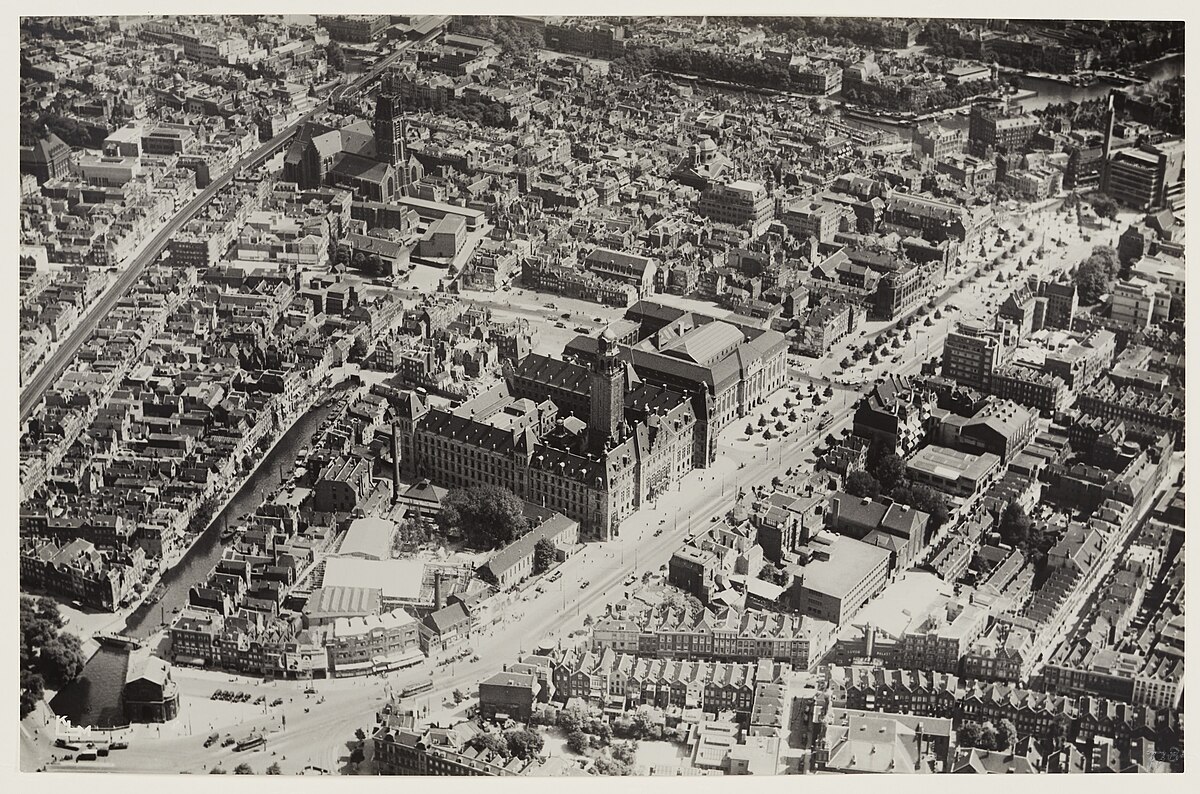
Photo (above) from 1933 by the district between the Hofplein in the foreground, with the Delftse Poort at the Delftsevaart on the left. In the middle the Coolsingel with the City Hall and the Post Office on the left, and the Coolsingel Hospital in the background on the right. In the background on the left the railway viaduct and surroundings near the Laurenskerk, in the middle the Wijnhaven and the Leuvehaven, and on the right the Bijenkorf on the Schiedamse Vest. From the northwest.
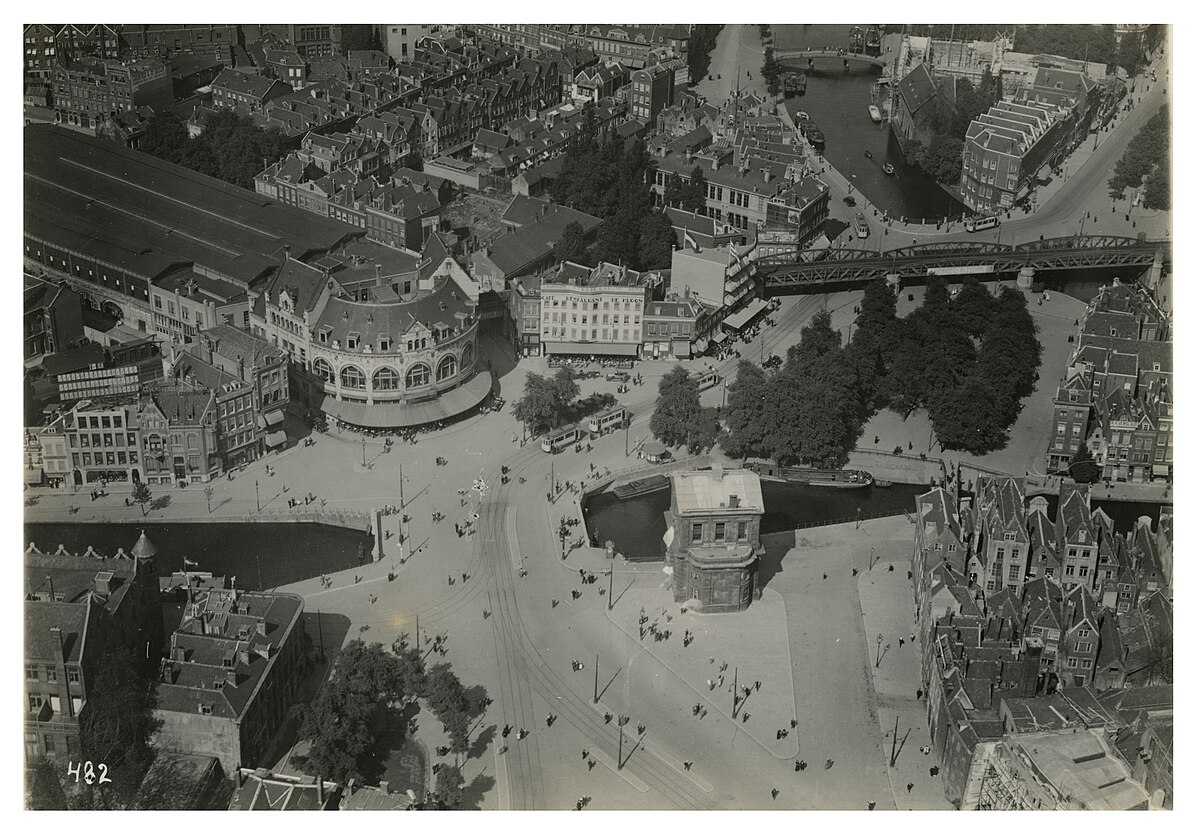
Photo (above) from 1922 of the area surrounding the Hofplein, with the Delftse Poort on the Delftsevaart in the foreground and the Hofplein station on the left with café-restaurant 'Loos' and café-restaurant 'de Kroon'.
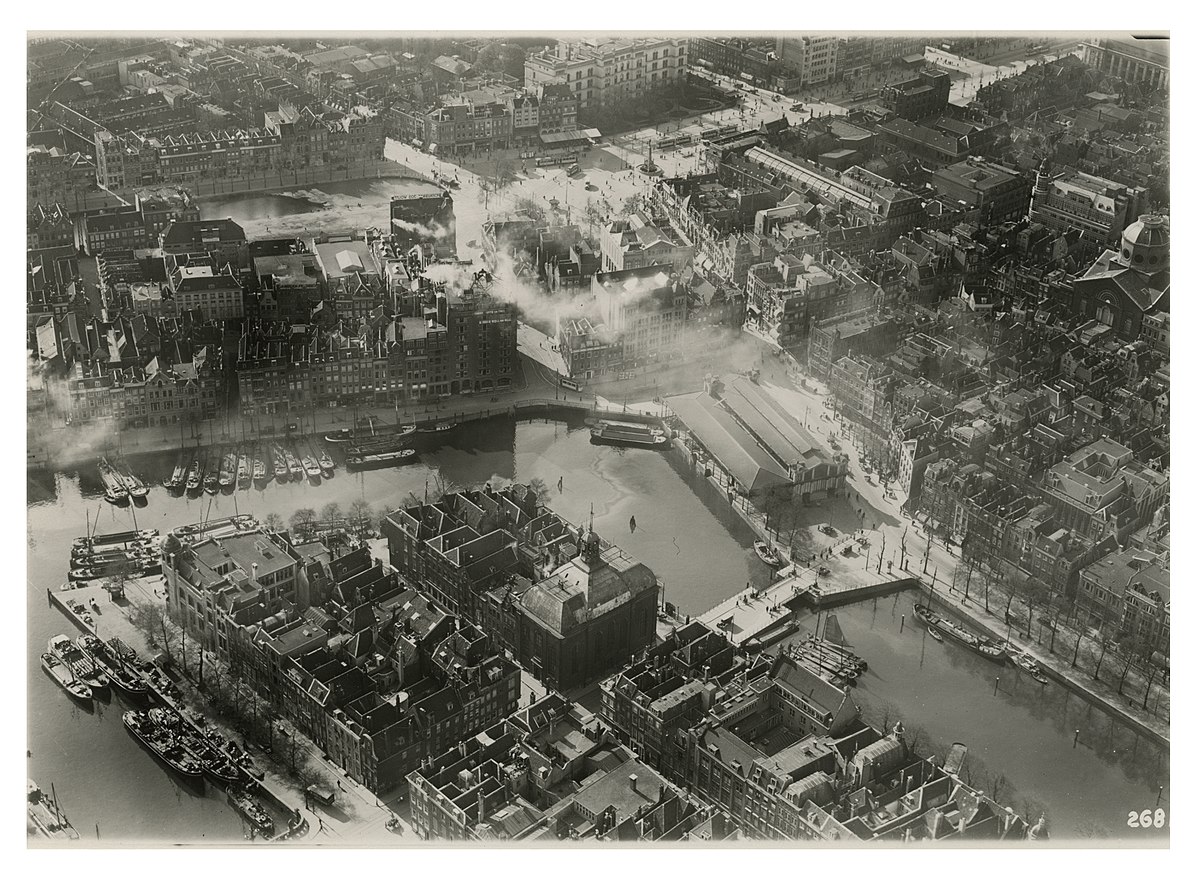
Photo (above) from 1935 by the area around the Wijnhaven (left) and the Leuvehaven at the end, in the middle the Gedempte Glashaven and the Lutheran church at the Wolfshoek. To the right is the Zeevischmarkt, near the Keizersbrug over the Blaak. In the background on the left the Schiedamsedijk, behind it the Schiedamse Vest and Schiedamsesingel and on the right the Calandplein and the Coolsingel.
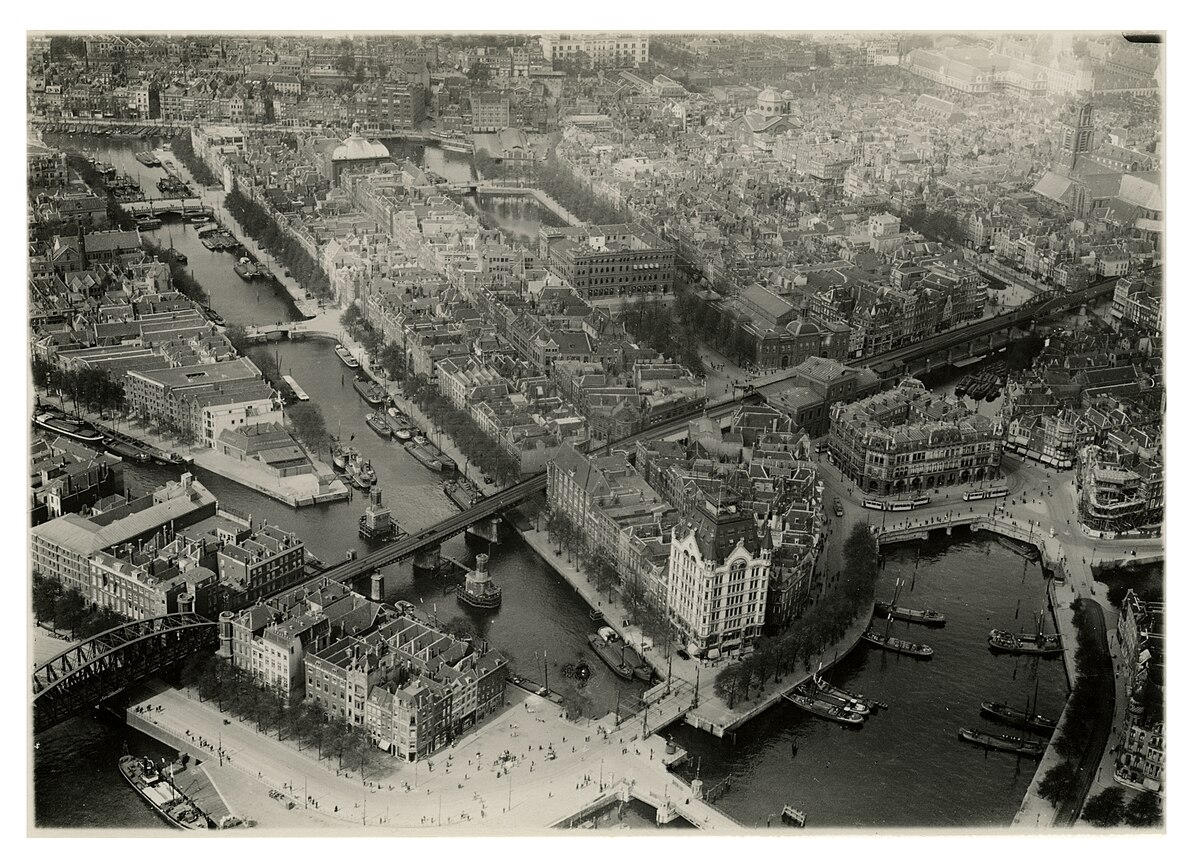
Photo (above) from 1922 - 1923 of the Oudehaven with the White House on the Wijnhaven and the Plan C collective building on the Oudehavenkade, on the left the Scheepmakershaven and the Wijnhaven, in the middle the post office, the Beursgebouw, the Beursstation and on the right the Sint-Laurenskerk, and in the background the Leuvehaven.
The Bombardment and Reconstruction
Unfortunately, the flourishing city was abruptly interrupted by the devastating bombardment on May 14, 1940. The subsequent fire reduced the heart of Rotterdam to rubble. But the Rotterdammers, known for their no-nonsense mentality, did not give in. With the slogan "Stronger through struggle" they started the reconstruction, which ultimately resulted in the birth of a new, modern metropolis.
Rotterdam has not forgotten its glorious past. Although the scars of war are still visible, the city now shines as a symbol of resilience and progress, a testament to its people's determination to overcome adversity and thrive in times of challenge.
Which buildings survived the bombings?
In the Second World War theyn many buildings in Rotterdam destroyed. However, there are a number of buildings that survived the bombings. The best known are probably the Town Hall and the Laurenskerk. Other buildings that survived the war include the Groothandelsgebouw, the Schielandshuis, the Erasmus House, De Doelen, Hotel New York and the White House.
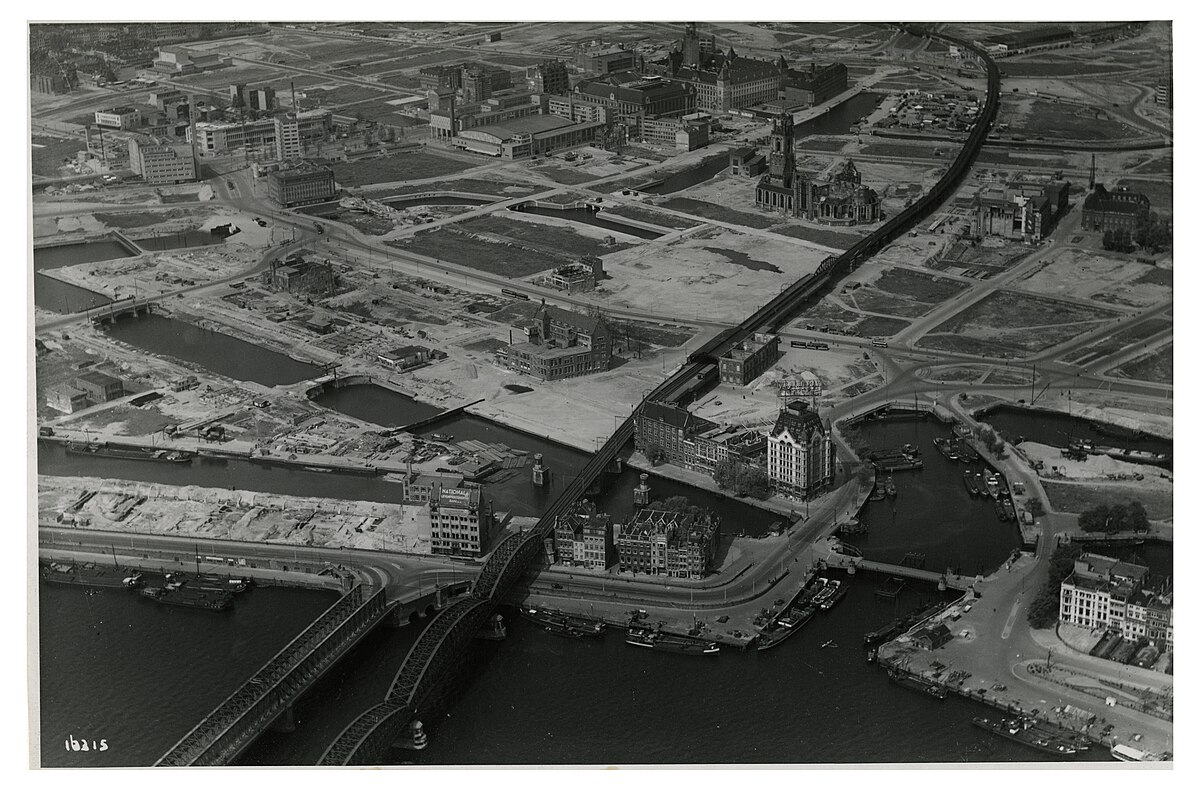
Photo (above) from 1946 at the height of the Nieuwe Maas and the Maas bridges (Willemsbrug and Spoorbrug) of the Bolwerk and the Oudehaven with the White House, on the left the Wijnhaven, further on the area around the Blaak in the middle, in the background the Coolsingel with the Stock Exchange, the post office and the town hall and on the right the Hoogstraat, the Sint-Laurenskerk and the Botersloot in an empty environment
See Rotterdam before the war for yourself?
Do you want to see with your own eyes what Rotterdam looked like before the war changed everything? There are several ways to discover and experience the history of the city. From exploring impressive exhibitions to taking inspiring walks, Rotterdam offers a wealth of opportunities to bring the past to life. Here are some fascinating ways to see the pre-war city for yourself:
Exhibition The Destroyed City
Step into the new space of Museum Rotterdam '40 - '45 NOW and relive Rotterdam before May 1940. The exhibition "The Destroyed City" offers an impressive view of the past, with photos, film footage and historical architectural models as a guide. The bombing of May 14, 1940 marked a traumatic turning point for Rotterdam, with the loss of a large part of the historic city center. Rotterdam opted for a radical renewal during its reconstruction, which still evokes mixed feelings. A striking attraction in the exhibition is an enormously detailed model of the pre-war center. This model offers a unique opportunity to explore the disappeared Rotterdam and see the city as it was before the destruction. With photographs, film footage and historical architectural models of well-known Rotterdam icons, the exhibition offers a fascinating insight into the city's past, from before the bombing to the early reconstruction.
WWII Walking Tour
Discover the story of Rotterdam during the Second World War with the WWII walking tour through the city, offered by De Rotterdam Tours. For 2.5 hours, an expert guide will take you through the city center and along the riverbank, where you will learn about the devastating bombing, occupation and reconstruction of the city. During the tour you will hear impressive stories about the impact of the war on Rotterdam and see the monuments that have been built since the reconstruction. A highlight of the experience is a visit to the roof of The White House, where you can enjoy breathtaking 360º views of the city. Moreover, the tour ends with a tasty snack in the modern architectural Markthal. Whether you participate in a shared group walking tour or opt for a private tour, this experience offers an in-depth look into the history of Rotterdam and the city's resilience during the difficult war years.
Fire Border Walking Tour
Discover the dark history of Rotterdam during the evening walking tour along the Brandgrens, provided by Walk Rotterdam. For 2 hours you will be guided through the illuminated streets of the city, exploring highlights such as the Fire Border, the outdoor stage and the spectacular Boijmans Depot Building, all steeped in the memories of the devastating impact of the Second World War. From the roof of the depot you will enjoy a breathtaking view of the skyline, before walking through the lively streets of Rotterdam, with stops at the striking Markthal and the unique Cube Houses. Be touched by fascinating stories about the war years and the reconstruction of the city as you discover the dark history of Rotterdam. This evening walking tour gives you a unique insight into Rotterdam during a crucial period of its past.
Fire boundary
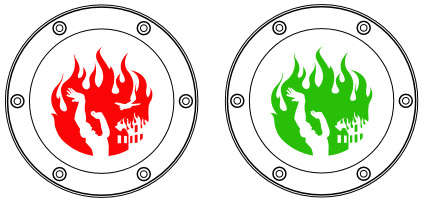
Along the fire border of Rotterdam you can follow an impressive walking route that leads you along the markers of the destroyed area. Since May 14, 2010, the fire boundary of the bombing has been marked with lights in the ground, equipped with an icon showing flames and a silhouette of a Heinkel bomber and the image of Zadkine. The same lamps have been placed on the North Island, but here the icon is green and the silhouette of the bomber is missing due to 'friendly fire'. The total length of the walking route is approximately 12 kilometers, and you can choose to walk the route in parts. This imaginary line, showing how far the destruction reached, is commemorated annually on May 14 during the 'Fire Border Commemoration'. The markings are small luminous stones placed in the sidewalk that light up at night, making them clearly visible. You can discover Rotterdam's fire border for yourself by following the route marked by these stones, which starts at the Maritime Museum Rotterdam and runs along the following streets:
- Wine Harbour
- Blaak
- Hoogstraat
- Meents
- Goudsesingel
- Pompenburg
- Schiekade
- Mountain Road
- Vroesenlaan
- Bentincklaan
- Statensingel
- Westersingel
- Mauritsweg
- Karel Doormanstraat
- Schouwburgplein
- Westblaak
- Rochussenstraat
- Mathenesserlaan
- Heemraadssingel
- Vierambachtsstraat
The route ends at the monument 'The Destroyed City' by sculptor Ossip Zadkine, which is located at Plein 1940 in the center of Rotterdam. Along the way you can see the various luminous stones that mark the fire boundary and information boards that tell more about the history of the bombing.
Download the Fire Boundary Route and Map
Trvia: When and by whom was Rotterdam bombed?
Rotterdam was bombed on May 14, 1940 between 1:27 PM and approximately 1:40 PM by bombers of the Luftwaffe, the German air force. This was one day after Germany invaded the Netherlands. Within 15 minutes, almost the entire historic city center of Rotterdam was destroyed by bombs and the resulting fires. 711 people died, and approximately 80,000 residents were left homeless within fifteen minutes.
Trivia: Why was Rotterdam bombed?
The Germans had planned a rapid advance through the Netherlands, Belgium and Luxembourg in the campaign against France. And because the Dutch troops resisted this, the Germans responded with a bombardment. The bombing of Rotterdam was intended to convince the Dutch of the strength of the German army, so that the Netherlands would surrender and pave the way for their campaign into France. This threat resulted in the surrender of Rotterdam that same day and on May 15, 1940 in that of the entire Netherlands.
Tags
Click on a tag for an overview of articles with the same topic.
bombardment war fire border
Comments 0
 Rotterdam Balloon Company
Rotterdam Balloon Company
